Yoga Nidra for Sleep: A Night Time Yoga Routine
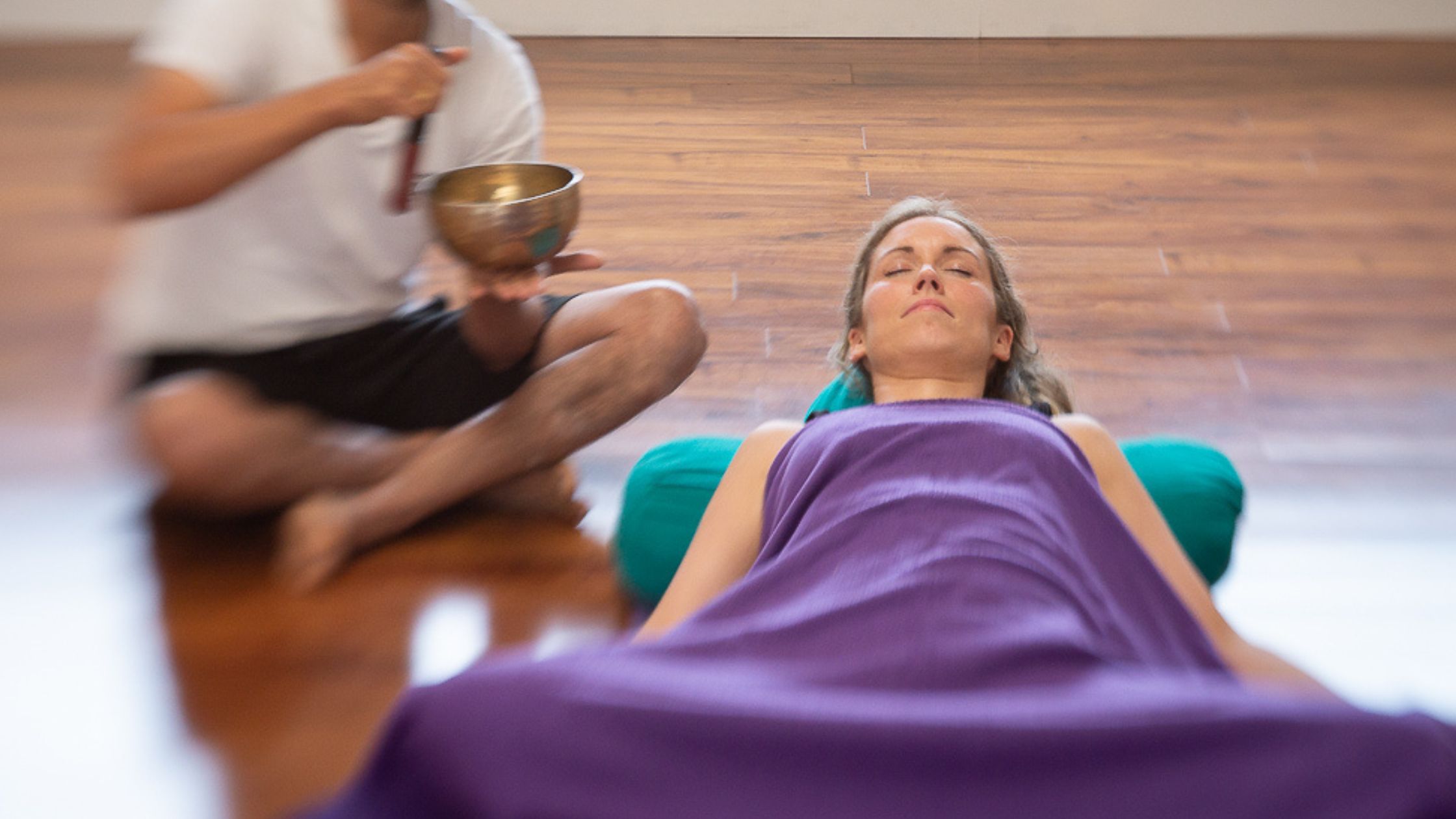
If your mind won’t switch off at night, yoga nidra for sleep is a calm, practical way to unwind. Think of it as guided, lie-down relaxation: you’re cosy, eyes closed, and a teacher walks your attention through the body and breath so the nervous system can settle.
At our yoga studio in Cork, you can try yoga nidra inside two soothing classes: Gentle Glow with Yoga Nidra and Restful Yin and Yoga Nidra.
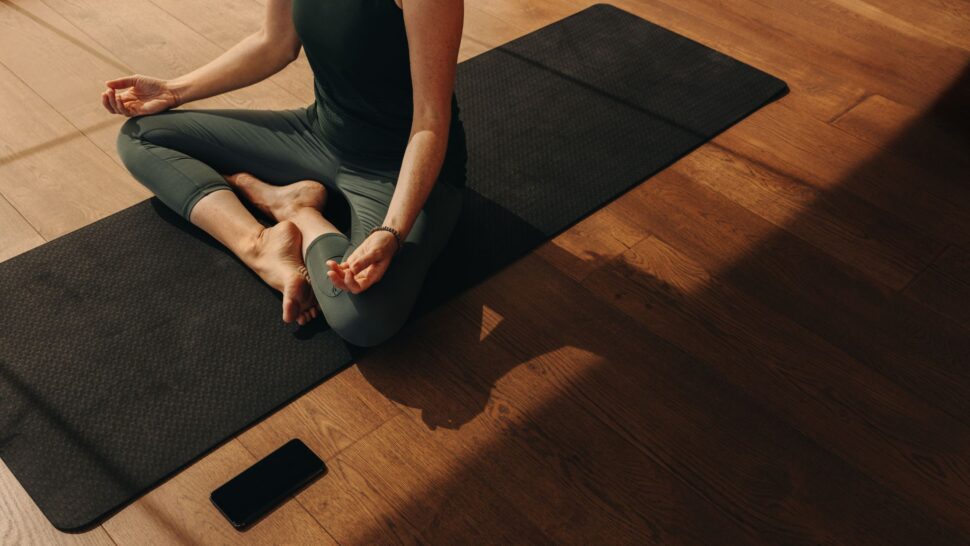
What is yoga nidra (and why it helps sleep)?
Yoga nidra—literally “yogic sleep”—is a structured rest practice done lying down. You’re guided through body scan, easy breath, and imagery that cue the “rest-and-digest” response. The result? Less tension, a quieter mind, and an easier slide towards sleep.
Why people use it at bedtime
- Helps release physical tension and “buzz” from the day
- Reduces overthinking by giving your mind a simple, soothing focus
- Works even if you’re new—no poses required, just get comfy
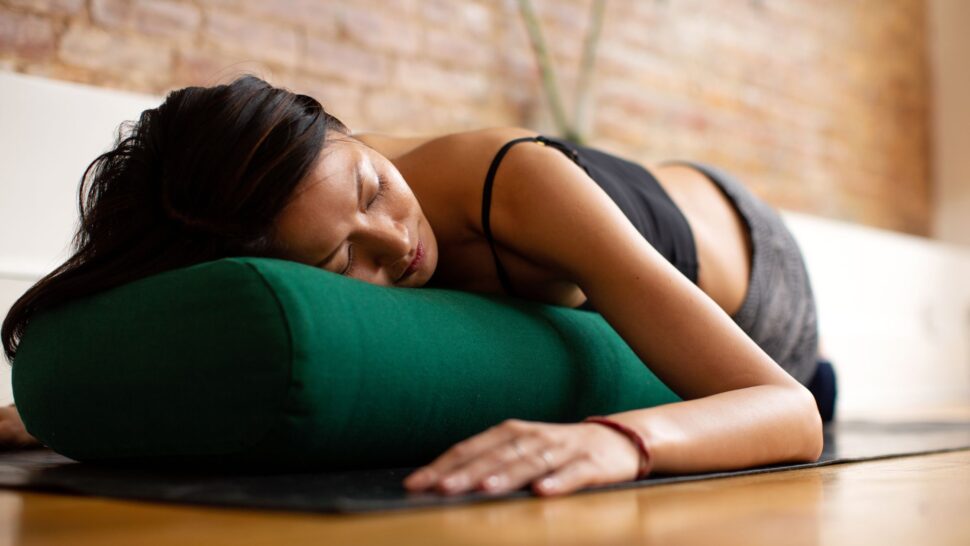
Which class should I choose?
Gentle Glow with Yoga Nidra
A slow, supportive sequence to loosen the day’s tightness—then a 10–15 minute yoga nidra for sleep at the end.
Best for: beginners and anyone wanting friendly movement before deep rest.
You’ll leave with: a softer body, quieter breath, and an easy glide into bedtime.
Restful Yin and Yoga Nidra
Long, supported floor shapes (2–5 minutes) to hydrate tissues and calm the nervous system—then a yoga nidra to seal the stillness.
Best for: all levels, especially desk bodies or overthinkers who need unhurried quiet.
You’ll leave with: deeper release, unhurried breath, and a heavy-blanket feeling of calm.
Not sure? If you want gentle movement then rest, choose Gentle Glow. If you want stillness then deeper rest, choose Restful Yin.
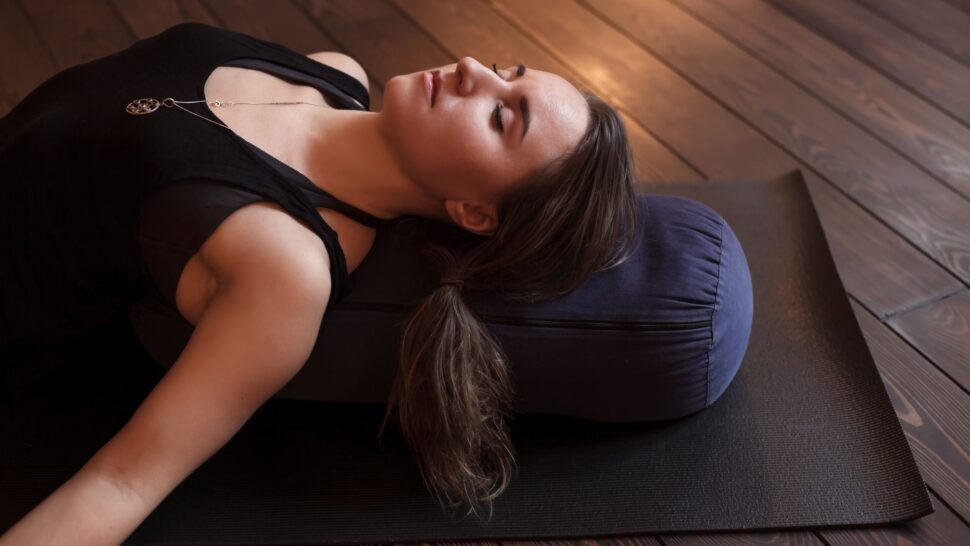
Finding the Best Time for Your Practice
Should you do yoga right before bed or earlier in the evening? It depends on your life and what feels good in your body—there isn’t one “right” way. Many people enjoy Yin or Restorative Yoga just before bedtime so the deep relaxation carries straight into sleep. Others prefer an earlier evening session to release the day’s tension and make the whole night feel calmer.
Try different times for a week or two and notice what supports your sleep patterns most—then stick with the routine that helps you rest well and wake refreshed.
Try a 10-minute taster tonight
Set a cosy space (dim lights, blanket, pillow under knees). Lie on your back, arms relaxed. Close your eyes.
- Breath count (2 mins): Inhale softly through the nose, exhale a touch longer. Count 4 in, 6 out.
- Body scan (6 mins): Notice right hand → forearm → upper arm → shoulder; then left side; then face, jaw, tongue; chest, belly; hips, legs, feet. Linger where it feels good.
- Release (2 mins): Let the breath breathe itself. Imagine the body getting heavier with every exhale. Stay until you feel ready for bed.
Simple do’s & don’ts
- Do keep the room a little cool; add a blanket for warmth.
- Do silence notifications; tell family/roommates you’re resting.
- Don’t judge the session—drifting in and out is normal.
- Don’t force sleep; allow rest, and sleep often follows.
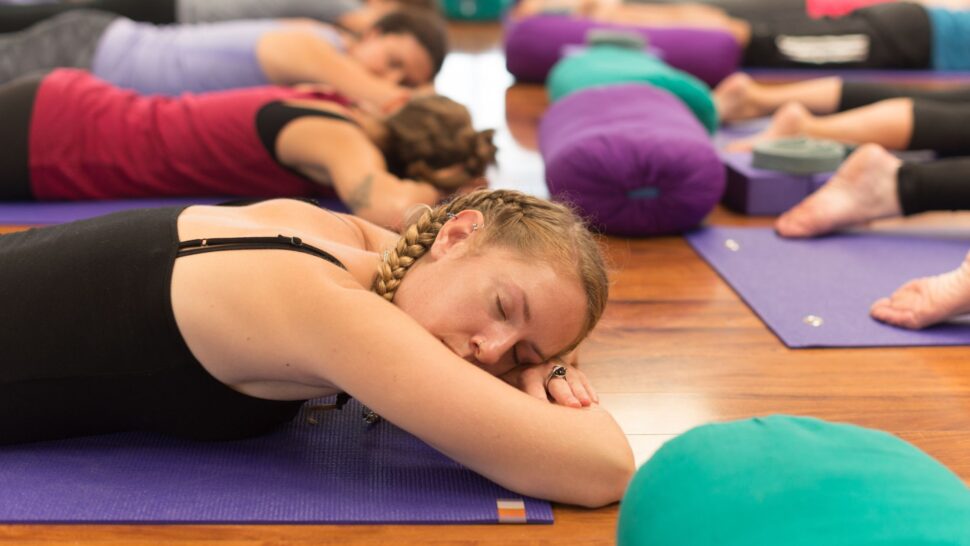
Ready to book a class?
Try Gentle Glow or Restful Yin and Yoga Nidra this week. First class FREE—use code FREECLS at checkout (one-time use).
Prefer home practice? Check our online ālaya options for guided nidra on-demand content.
FAQs
Can evening yoga help with insomnia or difficulty falling asleep?
A regular bedtime yoga practice can help with insomnia. It calms the nervous system and brings deep relaxation, making it easier to fall asleep. If you stick with bedtime yoga, you’ll often notice better sleep quality—rest comes easier and feels more peaceful.
Is yoga nidra the same as sleep? Will I fall asleep during it?
Yoga nidra isn’t literal sleep—it’s a guided, deeply relaxed state between wakefulness and sleep. Drifting off is common (and totally fine), but the aim is relaxed awareness as the teacher guides your attention. Practised regularly, it trains your body to switch into “rest-and-digest,” which can make falling asleep at night easier.
How long and how often should I practise yoga nidra for sleep?
Start with 10–15 minutes most nights (4–7x/week). Build to 20 minutes if it feels helpful. Keep the room dim and cool, use a blanket and a pillow under the knees, and try it after Gentle Glow with Yoga Nidra or Restful Yin and Yoga Nidra for an even smoother wind-down.